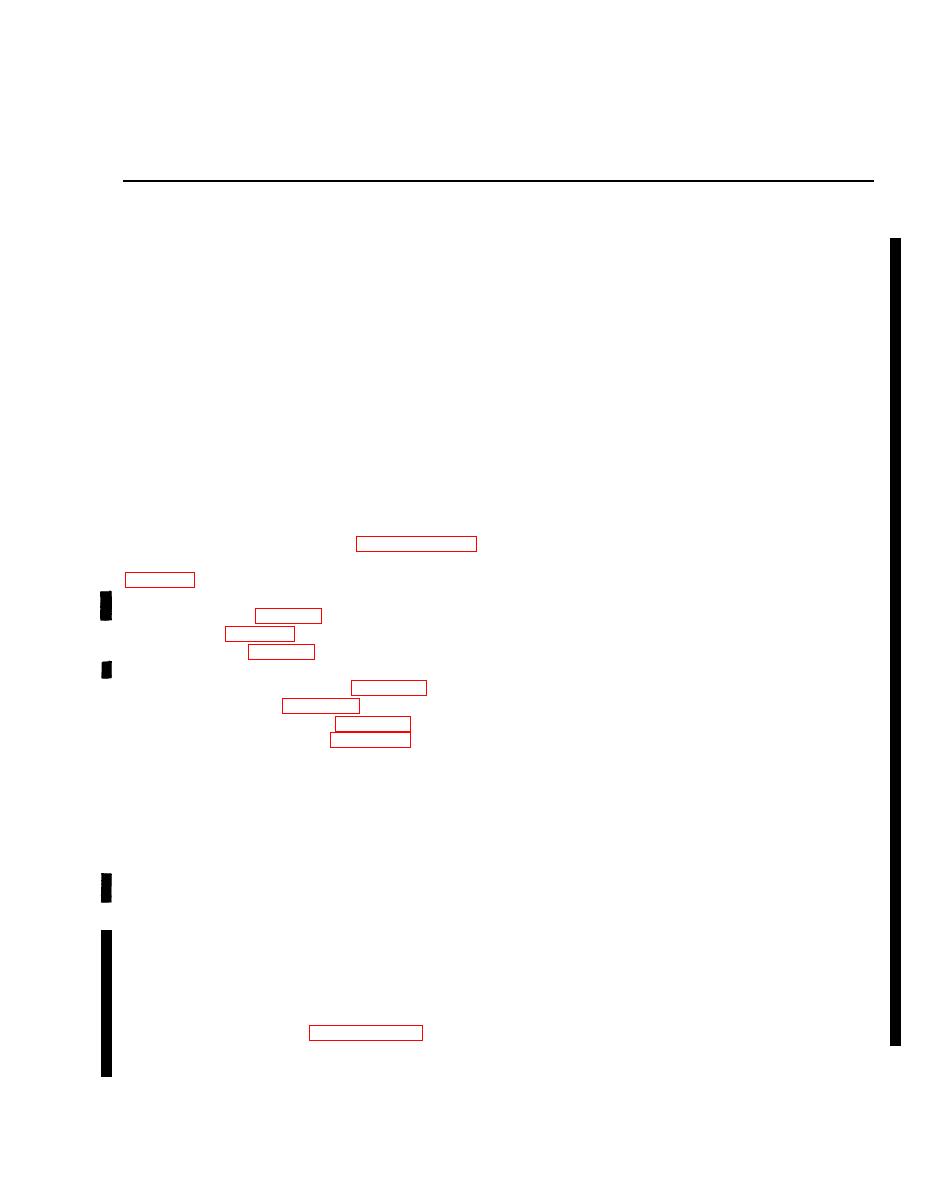 |
|||
|
|
|||
|
Page Title:
Chapter 3. ORGANIZATIONAL MAINTENANCE |
|
||
| ||||||||||
|
|  TM 11-5831-201-20
CHAPTER 3
ORGANIZATIONAL MAINTENANCE
Section I. GENERAL
b. Routine checks like CLEANING, DUST-
31. Scope of Organizational Maintenance
ING, WASHING, CHECKING FOR FRAYED
NOTE
CABLES, STOWING ITEMS NOT IN USE,
The pilot or copilot will not perform pre-
COVERING UNUSED RECEPTACLES, CHECK-
ventive or corrective maintenance.
ING FOR LOOSE NUTS AND BOLTS, AND
Organizational maintenance for the C-161lD/AIC
CHECKING FOR COMPLETENESS are not listed
consists of preventive maintenance, operational
as PMCS checks. They are things that you should
checks, troubleshooting, and minor repair and re-
do any time you see they must be done. If you
placement of equipment. The corrective main-
find a routine check like one of those listed in your
tenance required is generally limited to replace-
PMCS, it is because other operators reported prob-
ment of lamps, fuses, and substitution of equip-
lems with this item.
ment to keep the system in operation. The main-
NOTE
tenance duties assigned to the organizational
repairman of the C-161lD/AIC, together with a
When you are doing any PMCS or rou-
reference to the paragraph covering the specific
tine checks, keep in mind the warnings
maintenance function, are listed below. The tools
and cautions.
and test equipment required for organizational
WARNINGS
maintenance are indicated in paragraph 3--2.
maintenance
preventive
a. Organizational
Adequate ventilation should be provided
while using TRICHLOROTRIFLUORO-
b. Organizational preventive maintenance checks
ETHANE. Prolonged breathing of vapor
and services chart (para 3--5).
should be avoided. The solvent should not
c. Cleaning (para 3--6).
be used near heat or open flame; the prod-
d. Presemation (para 37 ).
ucts of decomposition are toxic and irri-
e. Deleted.
tating. Since TRICHLOROTRIFLUORO-
f. Repainting and refinishing (para 310).
ETHANE dissolves natrual oils, prolonged
g. Troubleshooting (para 31 1).
contact with skin should be avoided. When
necessary, use gloves which the solvent can-
i. Replacement procedure (para 3-13).
not penetrate. If the solvent is taken in-
ternally, consult a physician immediately.
32. Tools, Test Equipment, and Materials
Required
Compressed air is dangerous and can cause
a.
serious bodily harm if protective means or
Toolkit, Electronic Equipment TK-101/G.
b.
Multimeter AN/URM-105.
methods are not observed to prevent a chip
c.
Brush, MIL-G-7241.
or particle (of whatever size) from being
d.
blown into the eyes or unbroken skin of
Sandpaper, fine No. 000.
e.
Trichlorotrifluoroethane
the operator or other personnel. Goggles
must be worn at all times while cleaning
(NSN 6850-00-105-3084).
f. Lint free cloth.
with compressed air. Compressed air shall
not be used for cleaning purposes except
33. Preventive Maintenance
where reduced to less than 29 pounds per
a. Organizational preventive maintenance pro-
square inch gage (psig) and then only with
cedures are designed to help maintain equipment
effective chip guarding and personnel pro-
in serviceable condition. They include items to be
tective equipment. Do not use compressed
checked and how to check them. These checks
air to dry parts when trichlorotrifluoro-
and services, described in paragraph 3--5, outline
ethane has been used.
inspections that are to be made at specific inter-
mediate (I) intervals.
Change 2
3-1
|
|
Privacy Statement - Press Release - Copyright Information. - Contact Us |